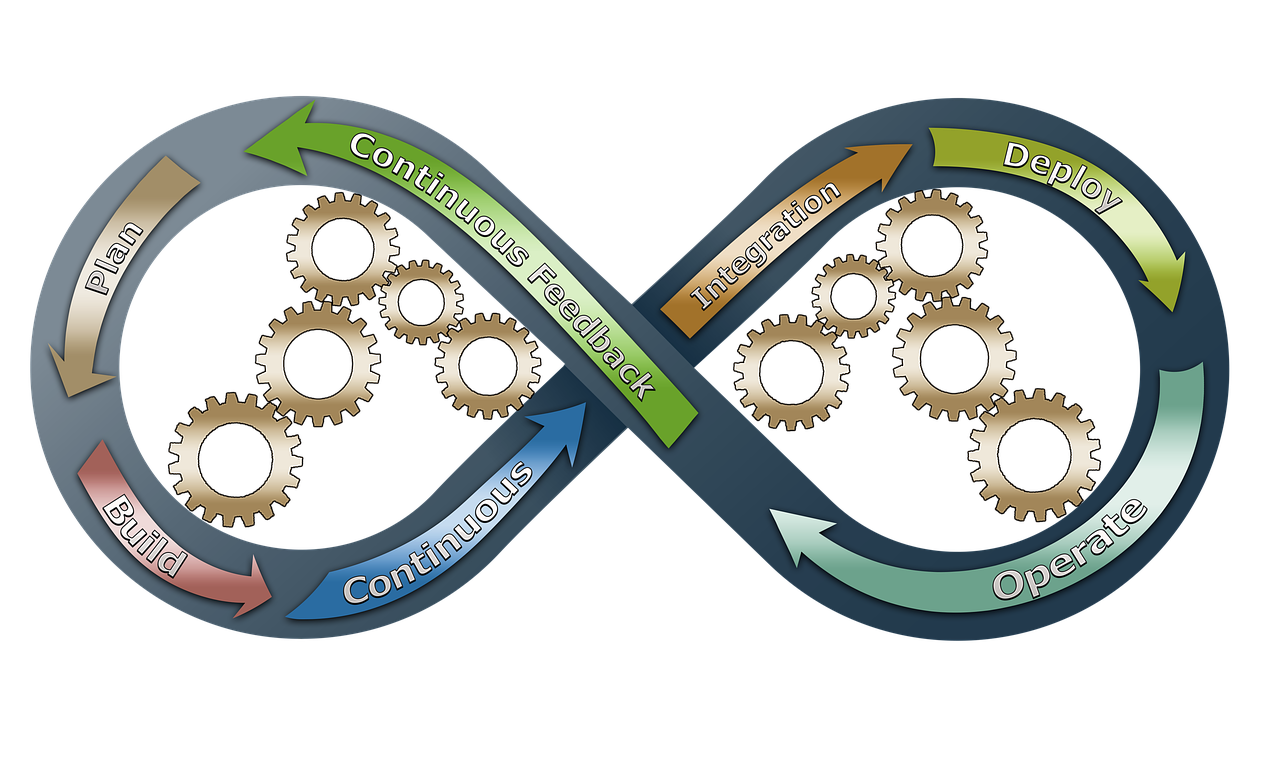In today’s fast-paced business environment, understanding market changes is crucial for any organization aiming to thrive. We find ourselves in a landscape where customer preferences can shift overnight, influenced by technological advancements, cultural trends, and economic fluctuations. To navigate this complexity, we must prioritize identifying customer needs.
This involves not only listening to what customers say but also observing their behaviors and preferences. By employing various research methods, such as surveys, focus groups, and social media analysis, we can gain valuable insights into what our customers truly desire. Moreover, we should recognize that customer needs are not static; they evolve over time.
As we engage with our audience, we can uncover emerging trends that may not yet be widely recognized. For instance, the rise of sustainability as a core value among consumers has prompted many businesses to rethink their product offerings. By staying attuned to these shifts, we can position ourselves as leaders in our respective markets, ensuring that our products resonate with the evolving expectations of our customers.
Key Takeaways
- Understanding Market Changes: Identifying Customer Needs
- Adapting Your Product Strategy: Aligning with Market Trends
- Balancing Customer Needs: Prioritizing Features and Improvements
- Communicating with Customers: Gathering Feedback and Insights
- Evaluating Competitors: Understanding Market Dynamics
Adapting Your Product Strategy: Aligning with Market Trends
Once we have a firm grasp on customer needs, the next step is to adapt our product strategy accordingly. Aligning with market trends requires a proactive approach, where we continuously assess the competitive landscape and adjust our offerings to meet the demands of our target audience. This might involve innovating existing products or developing entirely new solutions that cater to emerging needs.
For example, if we notice a growing interest in health and wellness, we might consider incorporating features that promote these values into our products. Additionally, it is essential for us to remain flexible in our approach. The market is dynamic, and what works today may not be effective tomorrow.
By fostering a culture of innovation within our teams, we can encourage creative thinking and experimentation. This agility allows us to pivot quickly when necessary, ensuring that our product strategy remains relevant and aligned with market trends. Ultimately, our ability to adapt will determine our success in meeting customer expectations and maintaining a competitive edge.
Balancing Customer Needs: Prioritizing Features and Improvements

As we strive to meet customer needs, we must also balance these demands with practical considerations such as resource allocation and technical feasibility. Prioritizing features and improvements is a critical aspect of product development that requires careful deliberation. We need to evaluate which enhancements will deliver the most value to our customers while also aligning with our business objectives.
This often involves creating a framework for prioritization that considers factors such as customer impact, development effort, and strategic alignment. In this process, collaboration across departments is vital. By involving stakeholders from marketing, sales, and customer support, we can gain diverse perspectives on what features are most important to our customers.
This collaborative approach not only helps us make informed decisions but also fosters a sense of ownership among team members. When everyone is aligned on priorities, we can work more efficiently towards delivering improvements that truly resonate with our audience.
Communicating with Customers: Gathering Feedback and Insights
Effective communication with our customers is paramount in gathering feedback and insights that inform our product development process. We must create channels for open dialogue, allowing customers to share their thoughts and experiences with our products. This could take the form of regular surveys, user interviews, or even community forums where customers can engage with us directly.
By actively seeking their input, we demonstrate that we value their opinions and are committed to enhancing their experience. Furthermore, it is essential for us to analyze the feedback we receive critically. Not all customer suggestions will be feasible or aligned with our strategic goals; however, identifying common themes can provide us with actionable insights.
By synthesizing this information, we can make informed decisions about which features to prioritize or which pain points to address. Ultimately, fostering a culture of feedback not only strengthens our relationship with customers but also drives continuous improvement in our products.
Evaluating Competitors: Understanding Market Dynamics
To effectively position ourselves in the market, we must also evaluate our competitors and understand the dynamics at play within our industry. This involves conducting thorough competitive analysis to identify strengths and weaknesses relative to other players in the market. By examining competitors’ offerings, pricing strategies, and customer engagement tactics, we can uncover opportunities for differentiation and innovation.
Moreover, understanding market dynamics extends beyond just analyzing competitors; it also involves keeping an eye on broader industry trends and shifts. For instance, if we notice a competitor successfully adopting new technologies or business models, it may signal a change in consumer expectations that we need to address. By staying informed about these developments, we can proactively adjust our strategies to maintain relevance and competitiveness in an ever-evolving landscape.
Implementing Changes: Adjusting Your Product Roadmap

Once we have gathered insights from customers and evaluated the competitive landscape, the next step is implementing changes by adjusting our product roadmap. This roadmap serves as a strategic guide for our product development efforts, outlining key milestones and deliverables over time. As we incorporate new features or improvements based on customer feedback and market analysis, it is crucial for us to communicate these changes clearly across the organization.
In addition to internal communication, we should also keep our customers informed about upcoming changes to our products. Transparency builds trust and helps manage expectations as we roll out new features or enhancements. By sharing our vision for the product’s future and how it aligns with customer needs, we can foster excitement and engagement among our user base.
Ultimately, effective implementation of changes requires collaboration across teams and a commitment to delivering value at every stage of the product lifecycle.
Measuring Success: Tracking Customer Satisfaction and Retention
To gauge the effectiveness of our efforts in meeting customer needs and adapting our product strategy, we must establish metrics for measuring success. Tracking customer satisfaction and retention rates provides us with valuable insights into how well we are performing in the eyes of our audience. Tools such as Net Promoter Score (NPS) surveys or Customer Satisfaction (CSAT) scores can help us quantify customer sentiment and identify areas for improvement.
Moreover, analyzing retention rates allows us to understand how effectively we are keeping customers engaged over time. High retention rates often indicate that we are successfully meeting customer needs and delivering value through our products. Conversely, if we notice a decline in retention or satisfaction scores, it signals a need for immediate action.
By continuously monitoring these metrics, we can make data-driven decisions that enhance the overall customer experience and drive long-term loyalty.
Anticipating Future Changes: Staying Agile and Proactive in the Market
Finally, as we look ahead, it is essential for us to anticipate future changes in the market and remain agile in our approach. The ability to foresee shifts in consumer behavior or emerging trends will position us favorably against competitors who may be slower to adapt. This requires us to cultivate a mindset of continuous learning and innovation within our organization.
We should invest in ongoing market research and trend analysis to stay informed about potential disruptions or opportunities on the horizon. Additionally, fostering a culture of experimentation allows us to test new ideas quickly without fear of failure. By embracing agility and proactivity, we can not only respond effectively to current market demands but also shape the future direction of our industry.
In conclusion, navigating market changes requires a multifaceted approach that encompasses understanding customer needs, adapting product strategies, balancing priorities, communicating effectively, evaluating competitors, implementing changes thoughtfully, measuring success diligently, and anticipating future shifts proactively. By embracing these principles collectively as an organization, we can position ourselves for sustained success in an ever-evolving marketplace.
For those interested in further exploring how to adapt business strategies amidst evolving market conditions, particularly in the realm of technology, the article “Navigating the Landscape of Technical Program Management” offers valuable insights. This piece delves into the complexities of managing technical programs and how strategic adjustments can be crucial in response to changing technological trends and customer demands. It complements the discussion on balancing customer needs with product strategy, providing a broader perspective on handling market changes effectively. You can read more about it











